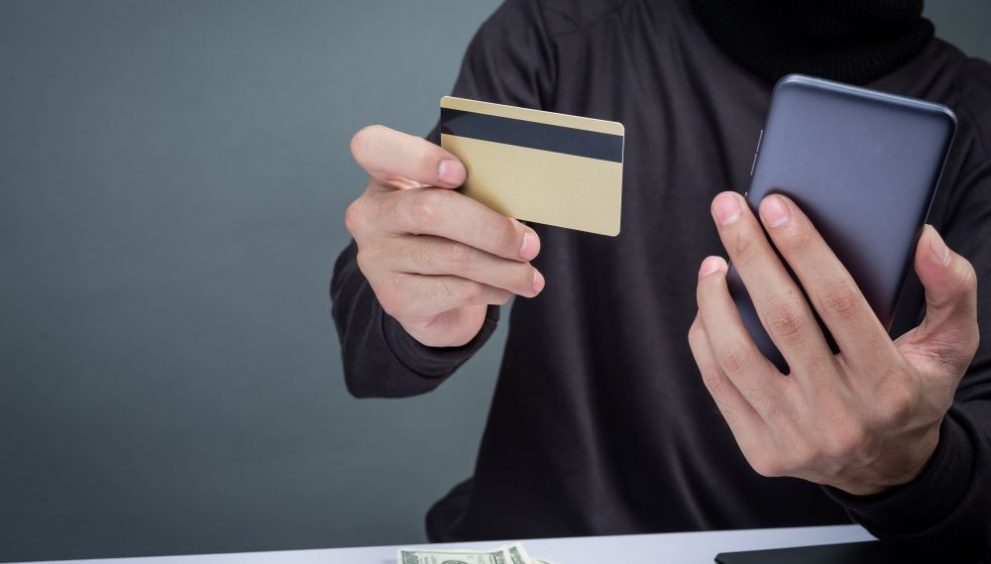Digital wallets like Apple Pay, Google Pay, PayPal, and Venmo have revolutionized the way we make payments online. With just a few taps on your smartphone, you can send money to friends, pay bills, and shop at your favorite online stores. However, the convenience of digital wallets also makes them a prime target for scammers looking to make a quick buck through fraudulent payment requests.
As more people adopt digital payment methods, it’s crucial to understand the risks and take steps to protect your digital wallet security. Falling victim to a digital payment fraud scheme can result in significant financial losses and the compromise of sensitive personal information. By staying informed and vigilant, you can enjoy the benefits of digital wallets while minimizing your exposure to potential threats.
Also read: Banking Fraud Alerts: Stay Ahead of Scammers
What Are Fraudulent Payment Requests?
Fraudulent payment requests are a type of scam where criminals attempt to trick you into sending them money through your digital wallet. These requests often come in the form of fake invoices, phishing emails, or bogus payment links designed to look like they’re from legitimate sources.
Common methods used in these scams include:
- Fake invoices claiming you owe money for a service or product you never purchased
- Phishing emails or texts with links to counterfeit payment pages that steal your login credentials
- Scammers posing as representatives from your digital wallet provider requesting account verification or updated payment information
Types of fraud specifically targeting digital wallet users include:
- Unauthorized transactions made by hackers who gain access to poorly secured accounts
- Scams targeting online shoppers with fake seller profiles and too-good-to-be-true deals
- Social engineering attacks that manipulate victims into willingly sending money to fraudsters
What is Digital Wallet Fraud?
Digital wallet fraud encompasses any type of scam or fraudulent activity involving mobile payment apps and services. Criminals employ various tactics to exploit the growing popularity of these platforms and the trust users place in their convenience and security features.
Some common examples of digital wallet fraud include:
- Account takeovers: Hackers use stolen login credentials to access victim’s digital wallet accounts and make unauthorized purchases or money transfers.
- Fake payment requests: Scammers send fraudulent invoices or payment requests via email, text message, or social media, often claiming the recipient owes money for a service or threatening legal action.
- Phishing scams: Fraudulent emails or texts trick users into revealing sensitive information like login details or credit card numbers, which are then used for identity theft or financial fraud.
- Malicious apps: Fake digital wallet apps in app stores may contain malware that steals users’ financial information or makes unauthorized transactions in the background.
Also read: How to know if an app is secure to be downloaded?
How Fraudulent Payment Requests Work
Fraudulent payment requests rely on social engineering tactics to manipulate victims into believing they are legitimate. Scammers often impersonate trusted entities like businesses, government agencies, or even friends and family members to lend credibility to their schemes.
A typical fraudulent payment request scam may unfold like this:
- You receive an unexpected email, text, or social media message claiming you owe money for a product, service, or outstanding debt.
- The message creates a sense of urgency by threatening legal action, account suspension, or other consequences if you don’t pay immediately.
- A link or attachment in the message directs you to a fake payment page designed to look like your digital wallet provider or a legitimate payment processor.
- When you enter your account details or financial information on the fraudulent page, scammers capture your data to make unauthorized transactions or commit identity theft.
In some cases, scammers may even call you directly, posing as representatives from your bank or digital wallet company. They’ll claim there’s an issue with your account that requires you to “verify” your login credentials or provide sensitive financial information over the phone.
Also read: Why Fraudsters target mobile devices and how to defend against it
Signs of a Fraudulent Payment Request
Knowing how to spot the red flags of a fraudulent payment request is key to protecting your digital wallet from scams. Be wary of any unsolicited messages requesting money, especially if they exhibit the following characteristics:
- Sense of urgency: Legitimate payment requests rarely require immediate action or threaten consequences for non-payment. Be suspicious of messages that try to pressure you into making a rushed decision.
- Poor grammar and spelling: While not always the case, many fraudulent payment requests contain obvious spelling and grammatical errors, as they are often generated by scammers overseas.
- Unexpected or unfamiliar senders: If you receive a payment request from a company or individual you don’t recognize or weren’t expecting to hear from, proceed with caution. Contact the alleged sender directly through official channels to verify the request’s authenticity.
- Suspicious links or attachments: Avoid clicking on links or downloading attachments from unsolicited payment requests, as they may lead to fake websites or contain malware. Instead, navigate directly to your digital wallet provider’s website or app to view any outstanding payments.
- Requests for sensitive information: No legitimate company will ever ask you to provide account passwords, Social Security numbers, or other sensitive data via email or text message. If a payment request includes these red flags, it’s almost certainly a scam.
Also read: Smart Security: the Role of Machine Learning in Identifying Fraud
How to Safeguard Your Digital Wallet
Adopting a multi-layered approach to wallet security is the best way to protect your finances and personal information from digital payment fraud. Start with these essential steps:
- Use strong, unique passwords for all your online accounts, including your digital wallet. Avoid using easily guessed information like birthdays or names of pets.
- Enable two-factor authentication (2FA) on your digital wallet and linked financial accounts. This adds an extra layer of security by requiring a second form of verification, such as a code sent to your phone, before allowing access.
- Keep your device’s operating system and digital wallet apps updated with the latest security patches and features. Many updates include important fixes for known vulnerabilities.
- Only download digital wallet apps from official sources like the Apple App Store or Google Play Store. Be wary of third-party app stores, which may contain malicious software.
- Regularly monitor your digital wallet and linked bank statements for suspicious activity. Enable transaction alerts to notify you of any unusual purchases or transfers.
- Avoid conducting financial transactions or accessing sensitive accounts while connected to public Wi-Fi networks, which are often unsecured and easy for hackers to intercept.
By implementing these wallet protection measures, you can significantly reduce your risk of falling victim to fraudulent payment schemes and other types of digital wallet fraud.
Best Practices for Preventing Fraudulent Payment Requests
In addition to securing your devices and accounts, adopting safe payment habits is crucial for avoiding fraudulent payment scams. Keep these best practices in mind:
- Only send money to people and businesses you know and trust. If you receive a payment request from an unfamiliar source, verify its legitimacy through direct contact before proceeding.
- Double-check the recipient’s information before confirming a payment. Scammers often create fake profiles with names and photos similar to real people or businesses to trick victims into sending money.
- Be wary of payment requests that ask you to bypass your digital wallet’s normal payment process or involve unusual methods like gift cards or wire transfers.
- Avoid sharing your digital wallet’s login credentials or linked financial account information with anyone, even if they claim to be a representative from your bank or payment provider.
- Trust your instincts. If a payment request seems suspicious or too good to be true, it probably is. Don’t let a scammer’s sense of urgency override your better judgment.
Remember, digital payment fraud prevention is an ongoing process. Stay informed about the latest scams and wallet security threats, and regularly review your wallet protection measures to ensure they’re up to date.
Suggested read: How to Minimize Your Exposure to Fraud
What to Do If You Fall Victim to a Fraudulent Payment Request
Even the most cautious digital wallet users can sometimes fall victim to sophisticated payment fraud schemes. If you believe you’ve been scammed, act quickly to minimize the damage:
- Immediately contact your digital wallet provider and linked financial institutions to report the fraudulent activity. They can help you freeze your accounts, dispute unauthorized charges, and prevent further losses.
- Change your digital wallet and linked account passwords, and review your security settings to ensure no unauthorized changes were made.
- Report the scam to the relevant authorities, such as your local police department and the Federal Trade Commission (FTC). This helps law enforcement track down the perpetrators and prevent future victims.
- Monitor your credit report for signs of identity theft, such as new accounts or inquiries you don’t recognize. Consider placing a fraud alert or security freeze on your credit file to prevent scammers from opening new accounts in your name.
Remember, the sooner you take action, the better your chances of recovering any lost funds and preventing further damage to your financial well-being.
Also read: How AI-Powered Malware is Outsmarting Traditional Security in 2024!
Stay Safe from Payment Frauds
As digital wallets become increasingly popular, it’s more important than ever to stay vigilant against fraudulent payment requests and other types of digital payment fraud. By understanding how these scams work and taking proactive steps to secure your accounts and devices, you can enjoy the convenience of mobile payments while minimizing your risk of falling victim.
For comprehensive protection against online threats, consider using a trusted security solution like Quick Heal Total Security. With features like real-time malware scanning, safe banking tools, and wallet protection from scanning, Quick Heal provides an extra layer of defense against digital payment fraud and other cyber risks.


